Pi
| Part ofa series of articleson the |
| mathematical constantπ |
|---|
 |
| 3.1415926535897932384626433... |
| Uses |
| Properties |
| Value |
| People |
| History |
| In culture |
| Related topics |
The numberπ(/paɪ/;spelled out as "pi") is amathematical constantthat is theratioof acircle'scircumferenceto itsdiameter,approximately equal to 3.14159. The numberπappears in many formulae acrossmathematicsandphysics.It is anirrational number,meaning that it cannot be expressed exactly as a ratio of two integers, although fractions such asare commonlyused to approximate it.Consequently, itsdecimal representationnever ends, norenters a permanently repeating pattern.It is atranscendental number,meaning that it cannot be a solution of anequationinvolving only finite sums, products, powers, and integers. The transcendence ofπimplies that it is impossible to solve the ancient challenge ofsquaring the circlewith acompass and straightedge.The decimal digits ofπappear to berandomly distributed,[a]but no proof of thisconjecturehas been found.
For thousands of years, mathematicians have attempted to extend their understanding ofπ,sometimes by computing its value to a high degree of accuracy. Ancient civilizations, including theEgyptiansandBabylonians,required fairly accurate approximations ofπfor practical computations. Around 250BC, theGreek mathematicianArchimedescreated an algorithm to approximateπwith arbitrary accuracy. In the 5th century AD,Chinese mathematiciansapproximatedπto seven digits, whileIndian mathematiciansmade a five-digit approximation, both using geometrical techniques. The first computational formula forπ,based oninfinite series,was discovered a millennium later.[1][2]The earliest known use of the Greek letterπto represent the ratio of a circle's circumference to its diameter was by the Welsh mathematicianWilliam Jonesin 1706.[3]
The invention ofcalculussoon led to the calculation of hundreds of digits ofπ,enough for all practical scientific computations. Nevertheless, in the 20th and 21st centuries, mathematicians andcomputer scientistshave pursued new approaches that, when combined with increasing computational power, extended the decimal representation ofπto many trillions of digits.[4][5]These computations are motivated by the development of efficient algorithms to calculate numeric series, as well as the human quest to break records.[6][7]The extensive computations involved have also been used to testsupercomputersas well as stress testing consumer computer hardware.
Because its definition relates to the circle,πis found in many formulae intrigonometryandgeometry,especially those concerning circles, ellipses and spheres. It is also found in formulae from other topics in science, such ascosmology,fractals,thermodynamics,mechanics,andelectromagnetism.It also appears in areas having little to do with geometry, such asnumber theoryandstatistics,and in modernmathematical analysiscan be defined without any reference to geometry. The ubiquity ofπmakes it one of the most widely known mathematical constants inside and outside of science. Several books devoted toπhave been published, and record-setting calculations of the digits ofπoften result in news headlines.
Fundamentals
Name
The symbol used by mathematicians to represent the ratio of a circle's circumference to its diameter is the lowercaseGreek letterπ,sometimes spelled out aspi.[8]In English,πispronounced as "pie"(/paɪ/PY).[9]In mathematical use, the lowercase letterπis distinguished from its capitalized and enlarged counterpartΠ,which denotes aproduct of a sequence,analogous to howΣdenotessummation.
The choice of the symbolπis discussed in the sectionAdoption of the symbolπ.
Definition
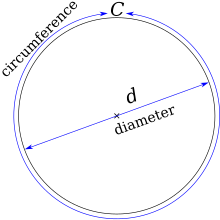
πis commonly defined as theratioof acircle'scircumferenceCto itsdiameterd:[10]
The ratiois constant, regardless of the circle's size. For example, if a circle has twice the diameter of another circle, it will also have twice the circumference, preserving the ratio.This definition ofπimplicitly makes use offlat (Euclidean) geometry;although the notion of a circle can be extended to anycurve (non-Euclidean) geometry,these new circles will no longer satisfy the formula.[10]
Here, the circumference of a circle is thearc lengtharound theperimeterof the circle, a quantity which can be formally defined independently of geometry usinglimits—a concept incalculus.[11]For example, one may directly compute the arc length of the top half of the unit circle, given inCartesian coordinatesby the equation,as theintegral:[12]
An integral such as this was adopted as the definition ofπbyKarl Weierstrass,who defined it directly as an integral in 1841.[b]
Integration is no longer commonly used in a first analytical definition because, asRemmert 2012explains,differential calculustypically precedes integral calculus in the university curriculum, so it is desirable to have a definition ofπthat does not rely on the latter. One such definition, due to Richard Baltzer[13]and popularized byEdmund Landau,[14]is the following:πis twice the smallest positive number at which thecosinefunction equals 0.[10][12][15]πis also the smallest positive number at which thesinefunction equals zero, and the difference between consecutive zeroes of the sine function. The cosine and sine can be defined independently of geometry as apower series,[16]or as the solution of adifferential equation.[15]
In a similar spirit,πcan be defined using properties of thecomplex exponential,expz,of acomplexvariablez.Like the cosine, the complex exponential can be defined in one of several ways. The set of complex numbers at whichexpzis equal to one is then an (imaginary) arithmetic progression of the form: and there is a unique positive real numberπwith this property.[12][17]
A variation on the same idea, making use of sophisticated mathematical concepts oftopologyandalgebra,is the following theorem:[18]there is a unique (up toautomorphism)continuousisomorphismfrom thegroupR/Zof real numbers under additionmodulointegers (thecircle group), onto the multiplicative group ofcomplex numbersofabsolute valueone. The numberπis then defined as half the magnitude of the derivative of this homomorphism.[19]
Irrationality and normality
πis anirrational number,meaning that it cannot be written as theratio of two integers.Fractions such as22/7and355/113are commonly used to approximateπ,but nocommon fraction(ratio of whole numbers) can be its exact value.[20]Becauseπis irrational, it has an infinite number of digits in itsdecimal representation,and does not settle into an infinitelyrepeating patternof digits. There are severalproofs thatπis irrational;they generally require calculus and rely on thereductio ad absurdumtechnique. The degree to whichπcan be approximated byrational numbers(called theirrationality measure) is not precisely known; estimates have established that the irrationality measure is larger than the measure ofeorln 2but smaller than the measure ofLiouville numbers.[21]
The digits ofπhave no apparent pattern and have passed tests forstatistical randomness,including tests fornormality;a number of infinite length is called normal when all possible sequences of digits (of any given length) appear equally often. The conjecture thatπisnormalhas not been proven or disproven.[22]
Since the advent of computers, a large number of digits ofπhave been available on which to perform statistical analysis.Yasumasa Kanadahas performed detailed statistical analyses on the decimal digits ofπ,and found them consistent with normality; for example, the frequencies of the ten digits 0 to 9 were subjected tostatistical significance tests,and no evidence of a pattern was found.[23]Any random sequence of digits contains arbitrarily long subsequences that appear non-random, by theinfinite monkey theorem.Thus, because the sequence ofπ's digits passes statistical tests for randomness, it contains some sequences of digits that may appear non-random, such as asequence of six consecutive 9sthat begins at the 762nd decimal place of the decimal representation ofπ.[24]This is also called the "Feynman point" inmathematical folklore,afterRichard Feynman,although no connection to Feynman is known.
Transcendence

In addition to being irrational,πis also atranscendental number,which means that it is not thesolutionof any non-constantpolynomial equationwithrationalcoefficients, such as.[25][c]
The transcendence ofπhas two important consequences: First,πcannot be expressed using any finite combination of rational numbers and square roots orn-th roots(such asor). Second, since no transcendental number can beconstructedwithcompass and straightedge,it is not possible to "square the circle".In other words, it is impossible to construct, using compass and straightedge alone, a square whose area is exactly equal to the area of a given circle.[26]Squaring a circle was one of the important geometry problems of theclassical antiquity.[27]Amateur mathematicians in modern times have sometimes attempted to square the circle and claim success—despite the fact that it is mathematically impossible.[28][29]
Continued fractions
As an irrational number,πcannot be represented as acommon fraction.But every number, includingπ,can be represented by an infinite series of nested fractions, called acontinued fraction:
Truncating the continued fraction at any point yields a rational approximation forπ;the first four of these are3,22/7,333/106,and355/113.These numbers are among the best-known and most widely used historical approximations of the constant. Each approximation generated in this way is a best rational approximation; that is, each is closer toπthan any other fraction with the same or a smaller denominator.[30]Becauseπis transcendental, it is by definition notalgebraicand so cannot be aquadratic irrational.Therefore,πcannot have aperiodic continued fraction.Although the simple continued fraction forπ(shown above) also does not exhibit any other obvious pattern,[31][32]severalgeneralized continued fractionsdo, such as:[33]
The middle of these is due to the mid-17th century mathematicianWilliam Brouncker,see§ Brouncker's formula.
Approximate value and digits
Someapproximations ofpiinclude:
- Integers:3
- Fractions:Approximate fractions include (in order of increasing accuracy)22/7,333/106,355/113,52163/16604,103993/33102,104348/33215,and245850922/78256779.[30](List is selected terms fromOEIS:A063674andOEIS:A063673.)
- Digits:The first 50 decimal digits are3.14159265358979323846264338327950288419716939937510...[34](seeOEIS:A000796)
Digits in other number systems
- The first 48binary(base2) digits (calledbits) are11.001001000011111101101010100010001000010110100011...(seeOEIS:A004601)
- The first 38 digits internary(base 3) are10.0102110122220102110021111102212222201...(seeOEIS:A004602)
- The first 20 digits inhexadecimal(base 16) are3.243F6A8885A308D31319...[35](seeOEIS:A062964)
- The first fivesexagesimal(base 60) digits are 3;8,29,44,0,47[36](seeOEIS:A060707)
Complex numbers and Euler's identity

Anycomplex number,sayz,can be expressed using a pair ofreal numbers.In thepolar coordinate system,one number (radiusorr) is used to representz's distance from theoriginof thecomplex plane,and the other (angle orφ) the counter-clockwiserotationfrom the positive real line:[37] whereiis theimaginary unitsatisfying.The frequent appearance ofπincomplex analysiscan be related to the behaviour of theexponential functionof a complex variable, described byEuler's formula:[38] wherethe constanteis the base of thenatural logarithm.This formula establishes a correspondence between imaginary powers ofeand points on theunit circlecentred at the origin of the complex plane. Settingin Euler's formula results inEuler's identity,celebrated in mathematics due to it containing five important mathematical constants:[38][39]
There arendifferentcomplex numberszsatisfying,and these are called the "n-throots of unity"[40]and are given by the formula:
History
Antiquity
The best-known approximations toπdatingbefore the Common Erawere accurate to two decimal places; this was improved upon inChinese mathematicsin particular by the mid-first millennium, to an accuracy of seven decimal places. After this, no further progress was made until the late medieval period.
The earliest written approximations ofπare found inBabylonand Egypt, both within one percent of the true value. In Babylon, aclay tabletdated 1900–1600 BC has a geometrical statement that, by implication, treatsπas25/8= 3.125.[41]In Egypt, theRhind Papyrus,dated around 1650 BC but copied from a document dated to 1850 BC, has a formula for the area of a circle that treatsπas.[32][41]Although somepyramidologistshave theorized that theGreat Pyramid of Gizawas built with proportions related toπ,this theory is not widely accepted by scholars.[42] In theShulba SutrasofIndian mathematics,dating to an oral tradition from the first or second millennium BC, approximations are given which have been variously interpreted as approximately 3.08831, 3.08833, 3.004, 3, or 3.125.[43]
Polygon approximation era
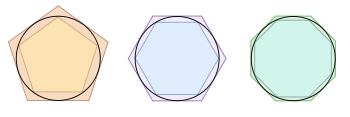

The first recorded algorithm for rigorously calculating the value ofπwas a geometrical approach using polygons, devised around 250 BC by the Greek mathematicianArchimedes,implementing themethod of exhaustion.[44]This polygonal algorithm dominated for over 1,000 years, and as a resultπis sometimes referred to as Archimedes's constant.[45]Archimedes computed upper and lower bounds ofπby drawing a regular hexagon inside and outside a circle, and successively doubling the number of sides until he reached a 96-sided regular polygon. By calculating the perimeters of these polygons, he proved that223/71<π<22/7(that is,3.1408 <π< 3.1429).[46]Archimedes' upper bound of22/7may have led to a widespread popular belief thatπis equal to22/7.[47]Around 150 AD, Greek-Roman scientistPtolemy,in hisAlmagest,gave a value forπof 3.1416, which he may have obtained from Archimedes or fromApollonius of Perga.[48][49]Mathematicians using polygonal algorithms reached 39 digits ofπin 1630, a record only broken in 1699 when infinite series were used to reach 71 digits.[50]
Inancient China,values forπincluded 3.1547 (around 1 AD),(100 AD, approximately 3.1623), and142/45(3rd century, approximately 3.1556).[51]Around 265 AD, theWei KingdommathematicianLiu Huicreated apolygon-based iterative algorithmand used it with a 3,072-sided polygon to obtain a value ofπof 3.1416.[52][53]Liu later invented a faster method of calculatingπand obtained a value of 3.14 with a 96-sided polygon, by taking advantage of the fact that the differences in area of successive polygons form a geometric series with a factor of 4.[52]The Chinese mathematicianZu Chongzhi,around 480 AD, calculated thatand suggested the approximationsand,which he termed theMilü(''close ratio ") andYuelü( "approximate ratio" ), respectively, usingLiu Hui's algorithmapplied to a 12,288-sided polygon. With a correct value for its seven first decimal digits, this value remained the most accurate approximation ofπavailable for the next 800 years.[54]
The Indian astronomerAryabhataused a value of 3.1416 in hisĀryabhaṭīya(499 AD).[55]Fibonacciinc. 1220computed 3.1418 using a polygonal method, independent of Archimedes.[56]Italian authorDanteapparently employed the value.[56]
The Persian astronomerJamshīd al-Kāshīproduced ninesexagesimaldigits, roughly the equivalent of 16 decimal digits, in 1424, using a polygon withsides,[57][58]which stood as the world record for about 180 years.[59]French mathematicianFrançois Viètein 1579 achieved nine digits with a polygon ofsides.[59]Flemish mathematicianAdriaan van Roomenarrived at 15 decimal places in 1593.[59]In 1596, Dutch mathematicianLudolph van Ceulenreached 20 digits, a record he later increased to 35 digits (as a result,πwas called the "Ludolphian number" in Germany until the early 20th century).[60]Dutch scientistWillebrord Snelliusreached 34 digits in 1621,[61]and Austrian astronomerChristoph Grienbergerarrived at 38 digits in 1630 using 1040sides.[62]Christiaan Huygenswas able to arrive at 10 decimal places in 1654 using a slightly different method equivalent toRichardson extrapolation.[63][64]
Infinite series

The calculation ofπwas revolutionized by the development ofinfinite seriestechniques in the 16th and 17th centuries. An infinite series is the sum of the terms of an infinitesequence.Infinite series allowed mathematicians to computeπwith much greater precision thanArchimedesand others who used geometrical techniques.[65]Although infinite series were exploited forπmost notably by European mathematicians such asJames GregoryandGottfried Wilhelm Leibniz,the approach also appeared in theKerala schoolsometime in the 14th or 15th century.[66][67]Around 1500 AD, a written description of an infinite series that could be used to computeπwas laid out inSanskritverse inTantrasamgrahabyNilakantha Somayaji.[66]The series are presented without proof, but proofs are presented in a later work,Yuktibhāṣā,from around 1530 AD. Several infinite series are described, including series for sine (which Nilakantha attributes toMadhava of Sangamagrama), cosine, and arctangent which are now sometimes referred to asMadhava series.The series for arctangent is sometimes calledGregory's seriesor the Gregory–Leibniz series.[66]Madhava used infinite series to estimateπto 11 digits around 1400.[68]
In 1593,François Viètepublished what is now known asViète's formula,aninfinite product(rather than aninfinite sum,which is more typically used inπcalculations):[69][70][71]
In 1655,John Wallispublished what is now known asWallis product,also an infinite product:[69]
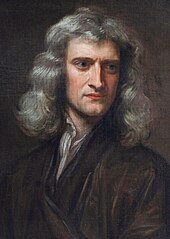
In the 1660s, the English scientistIsaac Newtonand German mathematicianGottfried Wilhelm Leibnizdiscoveredcalculus,which led to the development of many infinite series for approximatingπ.Newton himself used an arcsine series to compute a 15-digit approximation ofπin 1665 or 1666, writing, "I am ashamed to tell you to how many figures I carried these computations, having no other business at the time."[72]
In 1671,James Gregory,and independently, Leibniz in 1673, discovered theTaylor seriesexpansion forarctangent:[66][73][74]
This series, sometimes called theGregory–Leibniz series,equalswhen evaluated with.[74]But for,it converges impractically slowly(that is, approaches the answer very gradually), taking about ten times as many terms to calculate each additional digit.[75]
In 1699, English mathematicianAbraham Sharpused the Gregory–Leibniz series forto computeπto 71 digits, breaking the previous record of 39 digits, which was set with a polygonal algorithm.[76]
In 1706,John Machinused the Gregory–Leibniz series to produce an algorithm that converged much faster:[3][77][78]
Machin reached 100 digits ofπwith this formula.[79]Other mathematicians created variants, now known asMachin-like formulae,that were used to set several successive records for calculating digits ofπ.[80][79]
Isaac Newtonaccelerated the convergenceof the Gregory–Leibniz series in 1684 (in an unpublished work; others independently discovered the result):[81]
Leonhard Eulerpopularized this series in his 1755 differential calculus textbook, and later used it with Machin-like formulae, includingwith which he computed 20 digits ofπin one hour.[82]
Machin-like formulae remained the best-known method for calculatingπwell into the age of computers, and were used to set records for 250 years, culminating in a 620-digit approximation in 1946 by Daniel Ferguson – the best approximation achieved without the aid of a calculating device.[83]
In 1844, a record was set byZacharias Dase,who employed a Machin-like formula to calculate 200 decimals ofπin his head at the behest of German mathematicianCarl Friedrich Gauss.[84]
In 1853, British mathematicianWilliam Shankscalculatedπto 607 digits, but made a mistake in the 528th digit, rendering all subsequent digits incorrect. Though he calculated an additional 100 digits in 1873, bringing the total up to 707, his previous mistake rendered all the new digits incorrect as well.[85]
Rate of convergence
Some infinite series forπconvergefaster than others. Given the choice of two infinite series forπ,mathematicians will generally use the one that converges more rapidly because faster convergence reduces the amount of computation needed to calculateπto any given accuracy.[86]A simple infinite series forπis theGregory–Leibniz series:[87]
As individual terms of this infinite series are added to the sum, the total gradually gets closer toπ,and – with a sufficient number of terms – can get as close toπas desired. It converges quite slowly, though – after 500,000 terms, it produces only five correct decimal digits ofπ.[88]
An infinite series forπ(published by Nilakantha in the 15th century) that converges more rapidly than the Gregory–Leibniz series is:[89][90]
The following table compares the convergence rates of these two series:
| Infinite series forπ | After 1st term | After 2nd term | After 3rd term | After 4th term | After 5th term | Converges to: |
|---|---|---|---|---|---|---|
| 4.0000 | 2.6666... | 3.4666... | 2.8952... | 3.3396... | π= 3.1415... | |
| 3.0000 | 3.1666... | 3.1333... | 3.1452... | 3.1396... |
After five terms, the sum of the Gregory–Leibniz series is within 0.2 of the correct value ofπ,whereas the sum of Nilakantha's series is within 0.002 of the correct value. Nilakantha's series converges faster and is more useful for computing digits ofπ.Series that converge even faster includeMachin's seriesandChudnovsky's series,the latter producing 14 correct decimal digits per term.[86]
Irrationality and transcendence
Not all mathematical advances relating toπwere aimed at increasing the accuracy of approximations. When Euler solved theBasel problemin 1735, finding the exact value of the sum of the reciprocal squares, he established a connection betweenπand theprime numbersthat later contributed to the development and study of theRiemann zeta function:[91]
Swiss scientistJohann Heinrich Lambertin 1768 proved thatπisirrational,meaning it is not equal to the quotient of any two integers.[20]Lambert's proofexploited a continued-fraction representation of the tangent function.[92]French mathematicianAdrien-Marie Legendreproved in 1794 thatπ2is also irrational. In 1882, German mathematicianFerdinand von Lindemannproved thatπistranscendental,[93]confirming a conjecture made by bothLegendreand Euler.[94][95]Hardy and Wright states that "the proofs were afterwards modified and simplified by Hilbert, Hurwitz, and other writers".[96]
Adoption of the symbolπ
In the earliest usages, theGreek letterπwas used to denote thesemiperimeter(semiperipheriain Latin) of a circle[8]and was combined in ratios withδ(fordiameteror semidiameter) orρ(forradius) to form circle constants.[97][98][99][100](Before then, mathematicians sometimes used letters such ascorpinstead.[101]) The first recorded use isOughtred's"",to express the ratio of periphery and diameter in the 1647 and later editions ofClavis Mathematicae.[102][101]Barrowlikewise used""to represent the constant3.14...,[103]whileGregoryinstead used""to represent6.28... .[104][99]
The earliest known use of the Greek letterπalone to represent the ratio of a circle's circumference to its diameter was by Welsh mathematicianWilliam Jonesin his 1706 workSynopsis Palmariorum Matheseos;or, a New Introduction to the Mathematics.[3][105]The Greek letter appears on p. 243 in the phrase "Periphery (π) ", calculated for a circle with radius one. However, Jones writes that his equations forπare from the "ready pen of the truly ingenious Mr.John Machin",leading to speculation that Machin may have employed the Greek letter before Jones.[101]Jones' notation was not immediately adopted by other mathematicians, with the fraction notation still being used as late as 1767.[97][106]
Eulerstarted using the single-letter form beginning with his 1727Essay Explaining the Properties of Air,though he usedπ= 6.28...,the ratio of periphery to radius, in this and some later writing.[107][108]Euler first usedπ= 3.14...in his 1736 workMechanica,[109]and continued in his widely read 1748 workIntroductio in analysin infinitorum(he wrote: "for the sake of brevity we will write this number asπ;thusπis equal to half the circumference of a circle of radius1").[110]Because Euler corresponded heavily with other mathematicians in Europe, the use of the Greek letter spread rapidly, and the practice was universally adopted thereafter in theWestern world,[101]though the definition still varied between3.14...and6.28...as late as 1761.[111]
Modern quest for more digits
Computer era and iterative algorithms
TheGauss–Legendre iterative algorithm:
Initialize Iterate Then an estimate forπis given by
The development of computers in the mid-20th century again revolutionized the hunt for digits ofπ.MathematiciansJohn Wrenchand Levi Smith reached 1,120 digits in 1949 using a desk calculator.[112]Using aninverse tangent(arctan) infinite series, a team led by George Reitwiesner andJohn von Neumannthat same year achieved 2,037 digits with a calculation that took 70 hours of computer time on theENIACcomputer.[113][114]The record, always relying on an arctan series, was broken repeatedly (3089 digits in 1955,[115]7,480 digits in 1957; 10,000 digits in 1958; 100,000 digits in 1961) until 1 million digits were reached in 1973.[113]
Two additional developments around 1980 once again accelerated the ability to computeπ.First, the discovery of newiterative algorithmsfor computingπ,which were much faster than the infinite series; and second, the invention offast multiplication algorithmsthat could multiply large numbers very rapidly.[116]Such algorithms are particularly important in modernπcomputations because most of the computer's time is devoted to multiplication.[117]They include theKaratsuba algorithm,Toom–Cook multiplication,andFourier transform-based methods.[118]
The iterative algorithms were independently published in 1975–1976 by physicistEugene Salaminand scientistRichard Brent.[119]These avoid reliance on infinite series. An iterative algorithm repeats a specific calculation, each iteration using the outputs from prior steps as its inputs, and produces a result in each step that converges to the desired value. The approach was actually invented over 160 years earlier byCarl Friedrich Gauss,in what is now termed thearithmetic–geometric mean method(AGM method) orGauss–Legendre algorithm.[119]As modified by Salamin and Brent, it is also referred to as the Brent–Salamin algorithm.
The iterative algorithms were widely used after 1980 because they are faster than infinite series algorithms: whereas infinite series typically increase the number of correct digits additively in successive terms, iterative algorithms generallymultiplythe number of correct digits at each step. For example, the Brent–Salamin algorithm doubles the number of digits in each iteration. In 1984, brothersJohnandPeter Borweinproduced an iterative algorithm that quadruples the number of digits in each step; and in 1987, one that increases the number of digits five times in each step.[120]Iterative methods were used by Japanese mathematicianYasumasa Kanadato set several records for computingπbetween 1995 and 2002.[121]This rapid convergence comes at a price: the iterative algorithms require significantly more memory than infinite series.[121]
Motives for computingπ

For most numerical calculations involvingπ,a handful of digits provide sufficient precision. According to Jörg Arndt and Christoph Haenel, thirty-nine digits are sufficient to perform mostcosmologicalcalculations, because that is the accuracy necessary to calculate the circumference of theobservable universewith a precision of one atom. Accounting for additional digits needed to compensate for computationalround-off errors,Arndt concludes that a few hundred digits would suffice for any scientific application. Despite this, people have worked strenuously to computeπto thousands and millions of digits.[122]This effort may be partly ascribed to the human compulsion to break records, and such achievements withπoften make headlines around the world.[123][124]They also have practical benefits, such as testingsupercomputers,testing numerical analysis algorithms (includinghigh-precision multiplication algorithms); and within pure mathematics itself, providing data for evaluating the randomness of the digits ofπ.[125]
Rapidly convergent series
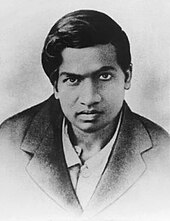
Modernπcalculators do not use iterative algorithms exclusively. New infinite series were discovered in the 1980s and 1990s that are as fast as iterative algorithms, yet are simpler and less memory intensive.[121]The fast iterative algorithms were anticipated in 1914, when Indian mathematicianSrinivasa Ramanujanpublished dozens of innovative new formulae forπ,remarkable for their elegance, mathematical depth and rapid convergence.[126]One of his formulae, based onmodular equations,is
This series converges much more rapidly than most arctan series, including Machin's formula.[127]Bill Gosperwas the first to use it for advances in the calculation ofπ,setting a record of 17 million digits in 1985.[128]Ramanujan's formulae anticipated the modern algorithms developed by the Borwein brothers (JonathanandPeter) and theChudnovsky brothers.[129]TheChudnovsky formuladeveloped in 1987 is
It produces about 14 digits ofπper term[130]and has been used for several record-settingπcalculations, including the first to surpass 1 billion (109) digits in 1989 by the Chudnovsky brothers, 10 trillion (1013) digits in 2011 by Alexander Yee and Shigeru Kondo,[131]and 100 trillion digits byEmma Haruka Iwaoin 2022.[132]For similar formulae, see also theRamanujan–Sato series.
In 2006, mathematicianSimon Plouffeused the PSLQinteger relation algorithm[133]to generate several new formulae forπ,conforming to the following template: whereqiseπ(Gelfond's constant),kis anodd number,anda,b,care certain rational numbers that Plouffe computed.[134]
Monte Carlo methods
Monte Carlo methods,which evaluate the results of multiple random trials, can be used to create approximations ofπ.[135]Buffon's needleis one such technique: If a needle of lengthℓis droppedntimes on a surface on which parallel lines are drawntunits apart, and ifxof those times it comes to rest crossing a line (x> 0), then one may approximateπbased on the counts:[136]
Another Monte Carlo method for computingπis to draw a circle inscribed in a square, and randomly place dots in the square. The ratio of dots inside the circle to the total number of dots will approximately equalπ/4.[137]

Another way to calculateπusing probability is to start with arandom walk,generated by a sequence of (fair) coin tosses: independentrandom variablesXksuch thatXk∈ {−1,1}with equal probabilities. The associated random walk is so that, for eachn,Wnis drawn from a shifted and scaledbinomial distribution.Asnvaries,Wndefines a (discrete)stochastic process.Thenπcan be calculated by[138]
This Monte Carlo method is independent of any relation to circles, and is a consequence of thecentral limit theorem,discussedbelow.
These Monte Carlo methods for approximatingπare very slow compared to other methods, and do not provide any information on the exact number of digits that are obtained. Thus they are never used to approximateπwhen speed or accuracy is desired.[139]
Spigot algorithms
Two algorithms were discovered in 1995 that opened up new avenues of research intoπ.They are calledspigot algorithmsbecause, like water dripping from aspigot,they produce single digits ofπthat are not reused after they are calculated.[140][141]This is in contrast to infinite series or iterative algorithms, which retain and use all intermediate digits until the final result is produced.[140]
MathematiciansStan Wagonand Stanley Rabinowitz produced a simple spigot algorithm in 1995.[141][142][143]Its speed is comparable to arctan algorithms, but not as fast as iterative algorithms.[142]
Another spigot algorithm, theBBPdigit extraction algorithm,was discovered in 1995 by Simon Plouffe:[144][145]
This formula, unlike others before it, can produce any individualhexadecimaldigit ofπwithout calculating all the preceding digits.[144]Individual binary digits may be extracted from individual hexadecimal digits, andoctaldigits can be extracted from one or two hexadecimal digits. An important application of digit extraction algorithms is to validate new claims of recordπcomputations: After a new record is claimed, the decimal result is converted to hexadecimal, and then a digit extraction algorithm is used to calculate several randomly selected hexadecimal digits near the end; if they match, this provides a measure of confidence that the entire computation is correct.[131]
Between 1998 and 2000, thedistributed computingprojectPiHexusedBellard's formula(a modification of the BBP algorithm) to compute the quadrillionth (1015th) bit ofπ,which turned out to be 0.[146]In September 2010, aYahoo!employee used the company'sHadoopapplication on one thousand computers over a 23-day period to compute 256bitsofπat the two-quadrillionth (2×1015th) bit, which also happens to be zero.[147]
In 2022, Plouffe found a base-10 algorithm for calculating digits ofπ.[148]
Role and characterizations in mathematics
Becauseπis closely related to the circle, it is found inmany formulaefrom the fields of geometry and trigonometry, particularly those concerning circles, spheres, or ellipses. Other branches of science, such as statistics, physics,Fourier analysis,and number theory, also includeπin some of their important formulae.
Geometry and trigonometry
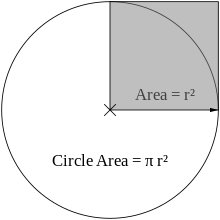
πappears in formulae for areas and volumes of geometrical shapes based on circles, such asellipses,spheres,cones,andtori.Below are some of the more common formulae that involveπ.[149]
- The circumference of a circle with radiusris2πr.
- Thearea of a circlewith radiusrisπr2.
- The area of an ellipse with semi-major axisaand semi-minor axisbisπab.
- The volume of a sphere with radiusris4/3πr3.
- The surface area of a sphere with radiusris4πr2.
Some of the formulae above are special cases of the volume of then-dimensional balland the surface area of its boundary, the(n−1)-dimensional sphere,givenbelow.
Apart from circles, there are othercurves of constant width.ByBarbier's theorem,every curve of constant width has perimeterπtimes its width. TheReuleaux triangle(formed by the intersection of three circles with the sides of anequilateral triangleas their radii) has the smallest possible area for its width and the circle the largest. There also exist non-circularsmoothand evenalgebraic curvesof constant width.[150]
Definite integralsthat describe circumference, area, or volume of shapes generated by circles typically have values that involveπ.For example, an integral that specifies half the area of a circle of radius one is given by:[151]
In that integral, the functionrepresents the height over the-axis of asemicircle(thesquare rootis a consequence of thePythagorean theorem), and the integral computes the area below the semicircle.
Units of angle
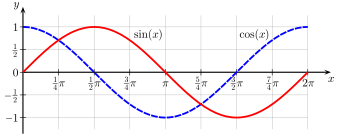
Thetrigonometric functionsrely on angles, and mathematicians generally use radians as units of measurement.πplays an important role in angles measured inradians,which are defined so that a complete circle spans an angle of 2πradians. The angle measure of 180° is equal toπradians, and1° =π/180 radians.[152]
Common trigonometric functions have periods that are multiples ofπ;for example, sine and cosine have period 2π,[153]so for any angleθand any integerk,[153]
Eigenvalues
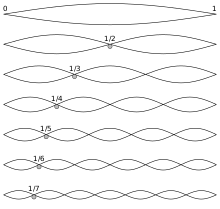
Many of the appearances ofπin the formulae of mathematics and the sciences have to do with its close relationship with geometry. However,πalso appears in many natural situations having apparently nothing to do with geometry.
In many applications, it plays a distinguished role as aneigenvalue.For example, an idealizedvibrating stringcan be modelled as the graph of a functionfon the unit interval[0, 1],withfixed endsf(0) =f(1) = 0.The modes of vibration of the string are solutions of thedifferential equation,or.Thusλis an eigenvalue of the second derivativeoperator,and is constrained bySturm–Liouville theoryto take on only certain specific values. It must be positive, since the operator isnegative definite,so it is convenient to writeλ=ν2,whereν> 0is called thewavenumber.Thenf(x) = sin(πx)satisfies the boundary conditions and the differential equation withν=π.[154]
The valueπis, in fact, theleastsuch value of the wavenumber, and is associated with thefundamental modeof vibration of the string. One way to show this is by estimating theenergy,which satisfiesWirtinger's inequality:[155]for a functionwithf(0) =f(1) = 0andf,f′bothsquare integrable,we have: with equality precisely whenfis a multiple ofsin(πx).Hereπappears as an optimal constant in Wirtinger's inequality, and it follows that it is the smallest wavenumber, using thevariational characterizationof the eigenvalue. As a consequence,πis the smallestsingular valueof the derivative operator on the space of functions on[0, 1]vanishing at both endpoints (theSobolev space).
Inequalities

The numberπserves appears in similar eigenvalue problems in higher-dimensional analysis. As mentionedabove,it can be characterized via its role as the best constant in theisoperimetric inequality:the areaAenclosed by a planeJordan curveof perimeterPsatisfies the inequality and equality is clearly achieved for the circle, since in that caseA= πr2andP= 2πr.[157]
Ultimately, as a consequence of the isoperimetric inequality,πappears in the optimal constant for the criticalSobolev inequalityinndimensions, which thus characterizes the role ofπin many physical phenomena as well, for example those of classicalpotential theory.[158][159][160]In two dimensions, the critical Sobolev inequality is forfa smooth function with compact support inR2,is thegradientoff,andandrefer respectively to theL2andL1-norm.The Sobolev inequality is equivalent to the isoperimetric inequality (in any dimension), with the same best constants.
Wirtinger's inequality also generalizes to higher-dimensionalPoincaré inequalitiesthat provide best constants for theDirichlet energyof ann-dimensional membrane. Specifically,πis the greatest constant such that for allconvexsubsetsGofRnof diameter 1, and square-integrable functionsuonGof mean zero.[161]Just as Wirtinger's inequality is thevariationalform of theDirichlet eigenvalueproblem in one dimension, the Poincaré inequality is the variational form of theNeumanneigenvalue problem, in any dimension.
Fourier transform and Heisenberg uncertainty principle

The constantπalso appears as a critical spectral parameter in theFourier transform.This is theintegral transform,that takes a complex-valued integrable functionfon the real line to the function defined as:
Although there are several different conventions for the Fourier transform and its inverse, any such convention must involveπsomewhere.The above is the most canonical definition, however, giving the unique unitary operator onL2that is also an algebra homomorphism ofL1toL∞.[162]
TheHeisenberg uncertainty principlealso contains the numberπ.The uncertainty principle gives a sharp lower bound on the extent to which it is possible to localize a function both in space and in frequency: with our conventions for the Fourier transform,
The physical consequence, about the uncertainty in simultaneous position and momentum observations of aquantum mechanicalsystem, isdiscussed below.The appearance ofπin the formulae of Fourier analysis is ultimately a consequence of theStone–von Neumann theorem,asserting the uniqueness of theSchrödinger representationof theHeisenberg group.[163]
Gaussian integrals

The fields ofprobabilityandstatisticsfrequently use thenormal distributionas a simple model for complex phenomena; for example, scientists generally assume that the observational error in most experiments follows a normal distribution.[164]TheGaussian function,which is theprobability density functionof the normal distribution withmeanμandstandard deviationσ,naturally containsπ:[165]
The factor ofmakes the area under the graph offequal to one, as is required for a probability distribution. This follows from achange of variablesin theGaussian integral:[165] which says that the area under the basicbell curvein the figure is equal to the square root ofπ.
Thecentral limit theoremexplains the central role of normal distributions, and thus ofπ,in probability and statistics. This theorem is ultimately connected with thespectral characterizationofπas the eigenvalue associated with the Heisenberg uncertainty principle, and the fact that equality holds in the uncertainty principle only for the Gaussian function.[166]Equivalently,πis the unique constant making the Gaussian normal distributione−πx2equal to its own Fourier transform.[167]Indeed, according toHowe (1980),the "whole business" of establishing the fundamental theorems of Fourier analysis reduces to the Gaussian integral.[163]
Topology
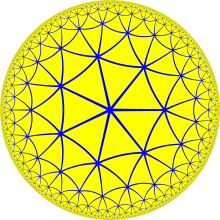
The constantπappears in theGauss–Bonnet formulawhich relates thedifferential geometry of surfacesto theirtopology.Specifically, if acompactsurfaceΣhasGauss curvatureK,then whereχ(Σ)is theEuler characteristic,which is an integer.[168]An example is the surface area of a sphereSof curvature 1 (so that itsradius of curvature,which coincides with its radius, is also 1.) The Euler characteristic of a sphere can be computed from itshomology groupsand is found to be equal to two. Thus we have reproducing the formula for the surface area of a sphere of radius 1.
The constant appears in many other integral formulae in topology, in particular, those involvingcharacteristic classesvia theChern–Weil homomorphism.[169]
Cauchy's integral formula

One of the key tools incomplex analysisiscontour integrationof a function over a positively oriented (rectifiable)Jordan curveγ.A form ofCauchy's integral formulastates that if a pointz0is interior toγ,then[170]
Although the curveγis not a circle, and hence does not have any obvious connection to the constantπ,a standard proof of this result usesMorera's theorem,which implies that the integral is invariant underhomotopyof the curve, so that it can be deformed to a circle and then integrated explicitly in polar coordinates. More generally, it is true that if a rectifiable closed curveγdoes not containz0,then the above integral is2πitimes thewinding numberof the curve.
The general form of Cauchy's integral formula establishes the relationship between the values of acomplex analytic functionf(z)on the Jordan curveγand the value off(z)at any interior pointz0ofγ:[171] providedf(z)is analytic in the region enclosed byγand extends continuously toγ.Cauchy's integral formula is a special case of theresidue theorem,that ifg(z)is ameromorphic functionthe region enclosed byγand is continuous in a neighbourhood ofγ,then where the sum is of theresiduesat thepolesofg(z).
Vector calculus and physics
The constantπis ubiquitous invector calculusandpotential theory,for example inCoulomb's law,[172]Gauss's law,Maxwell's equations,and even theEinstein field equations.[173][174]Perhaps the simplest example of this is the two-dimensionalNewtonian potential,representing the potential of a point source at the origin, whose associated field has unit outwardfluxthrough any smooth and oriented closed surface enclosing the source: The factor ofis necessary to ensure thatis thefundamental solutionof thePoisson equationin:[175] whereis theDirac delta function.
In higher dimensions, factors ofπare present because of a normalization by the n-dimensional volume of the unitn sphere.For example, in three dimensions, the Newtonian potential is:[175] which has the 2-dimensional volume (i.e., the area) of the unit 2-sphere in the denominator.
Total curvature

Inmathematicalstudy of thedifferential geometry of curves,thetotal curvatureof animmersedplane curveis theintegralofcurvaturealong a curve taken with respect toarc length:
The gamma function and Stirling's approximation

Thefactorialfunctionis the product of all of the positive integers throughn.Thegamma functionextends the concept offactorial(normally defined only for non-negative integers) to all complex numbers, except the negative real integers, with the identity.When the gamma function is evaluated at half-integers, the result containsπ.For example,and.[176]
The gamma function is defined by itsWeierstrass productdevelopment:[177] whereγis theEuler–Mascheroni constant.Evaluated atz= 1/2and squared, the equationΓ(1/2)2= πreduces to the Wallis product formula. The gamma function is also connected to theRiemann zeta functionand identities for thefunctional determinant,in which the constantπplays an important role.
The gamma function is used to calculate the volumeVn(r)of then-dimensional ballof radiusrin Euclideann-dimensional space, and the surface areaSn−1(r)of its boundary, the(n−1)-dimensional sphere:[178]
Further, it follows from thefunctional equationthat
The gamma function can be used to create a simple approximation to the factorial functionn!for largen:which is known asStirling's approximation.[179]Equivalently,
As a geometrical application of Stirling's approximation, letΔndenote thestandard simplexinn-dimensional Euclidean space, and(n+ 1)Δndenote the simplex having all of its sides scaled up by a factor ofn+ 1.Then
Ehrhart's volume conjectureis that this is the (optimal) upper bound on the volume of aconvex bodycontaining only onelattice point.[180]
Number theory and Riemann zeta function


TheRiemann zeta functionζ(s)is used in many areas of mathematics. When evaluated ats= 2it can be written as
Finding asimple solutionfor this infinite series was a famous problem in mathematics called theBasel problem.Leonhard Eulersolved it in 1735 when he showed it was equal toπ2/6.[91]Euler's result leads to thenumber theoryresult that the probability of two random numbers beingrelatively prime(that is, having no shared factors) is equal to6/π2.[181][182]This probability is based on the observation that the probability that any number isdivisibleby a primepis1/p(for example, every 7th integer is divisible by 7.) Hence the probability that two numbers are both divisible by this prime is1/p2,and the probability that at least one of them is not is1 − 1/p2.For distinct primes, these divisibility events are mutually independent; so the probability that two numbers are relatively prime is given by a product over all primes:[183]
This probability can be used in conjunction with arandom number generatorto approximateπusing a Monte Carlo approach.[184]
The solution to the Basel problem implies that the geometrically derived quantityπis connected in a deep way to the distribution of prime numbers. This is a special case ofWeil's conjecture on Tamagawa numbers,which asserts the equality of similar such infinite products ofarithmeticquantities, localized at each primep,and ageometricalquantity: the reciprocal of the volume of a certainlocally symmetric space.In the case of the Basel problem, it is thehyperbolic 3-manifoldSL2(R)/SL2(Z).[185]
The zeta function also satisfies Riemann's functional equation, which involvesπas well as the gamma function:
Furthermore, the derivative of the zeta function satisfies
A consequence is thatπcan be obtained from thefunctional determinantof theharmonic oscillator.This functional determinant can be computed via a product expansion, and is equivalent to the Wallis product formula.[186]The calculation can be recast inquantum mechanics,specifically thevariational approachto thespectrum of the hydrogen atom.[187]
Fourier series

The constantπalso appears naturally inFourier seriesofperiodic functions.Periodic functions are functions on the groupT=R/Zof fractional parts of real numbers. The Fourier decomposition shows that a complex-valued functionfonTcan be written as an infinite linear superposition ofunitary charactersofT.That is, continuousgroup homomorphismsfromTto thecircle groupU(1)of unit modulus complex numbers. It is a theorem that every character ofTis one of the complex exponentials.
There is a unique character onT,up to complex conjugation, that is a group isomorphism. Using theHaar measureon the circle group, the constantπis half the magnitude of theRadon–Nikodym derivativeof this character. The other characters have derivatives whose magnitudes are positive integral multiples of 2π.[19]As a result, the constantπis the unique number such that the groupT,equipped with its Haar measure, isPontrjagin dualto thelatticeof integral multiples of 2π.[189]This is a version of the one-dimensionalPoisson summation formula.
Modular forms and theta functions
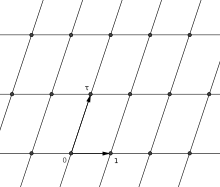
The constantπis connected in a deep way with the theory ofmodular formsandtheta functions.For example, theChudnovsky algorithminvolves in an essential way thej-invariantof anelliptic curve.
Modular formsareholomorphic functionsin theupper half planecharacterized by their transformation properties under themodular group(or its various subgroups), a lattice in the group.An example is theJacobi theta function which is a kind of modular form called aJacobi form.[190]This is sometimes written in terms of thenome.
The constantπis the unique constant making the Jacobi theta function anautomorphic form,which means that it transforms in a specific way. Certain identities hold for all automorphic forms. An example is which implies thatθtransforms as a representation under the discreteHeisenberg group.General modular forms and othertheta functionsalso involveπ,once again because of theStone–von Neumann theorem.[190]
Cauchy distribution and potential theory
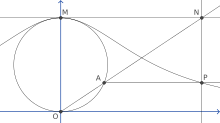
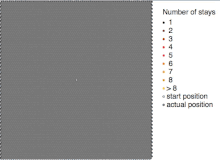
TheCauchy distribution is aprobability density function.The total probability is equal to one, owing to the integral:
TheShannon entropyof the Cauchy distribution is equal toln(4π),which also involvesπ.
The Cauchy distribution plays an important role inpotential theorybecause it is the simplestFurstenberg measure,the classicalPoisson kernelassociated with aBrownian motionin a half-plane.[191]Conjugate harmonic functionsand so also theHilbert transformare associated with the asymptotics of the Poisson kernel. The Hilbert transformHis the integral transform given by theCauchy principal valueof thesingular integral
The constantπis the unique (positive) normalizing factor such thatHdefines alinear complex structureon the Hilbert space of square-integrable real-valued functions on the real line.[192]The Hilbert transform, like the Fourier transform, can be characterized purely in terms of its transformation properties on the Hilbert spaceL2(R):up to a normalization factor, it is the unique bounded linear operator that commutes with positive dilations and anti-commutes with all reflections of the real line.[193]The constantπis the unique normalizing factor that makes this transformation unitary.
In the Mandelbrot set
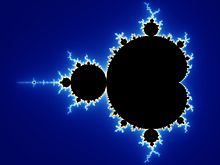
An occurrence ofπin thefractalcalled theMandelbrot setwas discovered by David Boll in 1991.[194]He examined the behaviour of the Mandelbrot set near the "neck" at(−0.75, 0).When the number of iterations until divergence for the point(−0.75,ε)is multiplied byε,the result approachesπasεapproaches zero. The point(0.25 +ε,0)at the cusp of the large "valley" on the right side of the Mandelbrot set behaves similarly: the number of iterations until divergence multiplied by the square root ofεtends toπ.[194][195]
Projective geometry
LetVbe the set of all twice differentiable real functionsthat satisfy theordinary differential equation.ThenVis a two-dimensional realvector space,with two parameters corresponding to a pair ofinitial conditionsfor the differential equation. For any,letbe the evaluation functional, which associates to eachthe valueof the functionfat the real pointt.Then, for eacht,thekernelofis a one-dimensional linear subspace ofV.Hencedefines a function fromfrom the real line to thereal projective line.This function is periodic, and the quantityπcan be characterized as the period of this map.[196]This is notable in that the constantπ,rather than 2π,appears naturally in this context.
Outside mathematics
Describing physical phenomena
Although not aphysical constant,πappears routinely in equations describing fundamental principles of the universe, often because ofπ's relationship to the circle and tospherical coordinate systems.A simple formula from the field ofclassical mechanicsgives the approximate periodTof a simplependulumof lengthL,swinging with a small amplitude (gis theearth's gravitational acceleration):[197]
One of the key formulae ofquantum mechanicsisHeisenberg's uncertainty principle,which shows that the uncertainty in the measurement of a particle's position (Δx) andmomentum(Δp) cannot both be arbitrarily small at the same time (wherehis thePlanck constant):[198]
The fact thatπis approximately equal to 3 plays a role in the relatively long lifetime oforthopositronium.The inverse lifetime to lowest order in thefine-structure constantαis[199] wheremeis the mass of the electron.
πis present in some structural engineering formulae, such as thebucklingformula derived by Euler, which gives the maximum axial loadFthat a long, slender column of lengthL,modulus of elasticityE,andarea moment of inertiaIcan carry without buckling:[200]
The field offluid dynamicscontainsπinStokes' law,which approximates thefrictional forceFexerted on small,sphericalobjects of radiusR,moving with velocityvin afluidwithdynamic viscosityη:[201]
In electromagnetics, thevacuum permeabilityconstantμ0appears inMaxwell's equations,which describe the properties ofelectricandmagneticfields andelectromagnetic radiation.Before 20 May 2019, it was defined as exactly
Memorizing digits
Piphilologyis the practice of memorizing large numbers of digits ofπ,[202]and world-records are kept by theGuinness World Records.The record for memorizing digits ofπ,certified by Guinness World Records, is 70,000 digits, recited in India by Rajveer Meena in 9 hours and 27 minutes on 21 March 2015.[203]In 2006,Akira Haraguchi,a retired Japanese engineer, claimed to have recited 100,000 decimal places, but the claim was not verified by Guinness World Records.[204]
One common technique is to memorize a story or poem in which the word lengths represent the digits ofπ:The first word has three letters, the second word has one, the third has four, the fourth has one, the fifth has five, and so on. Such memorization aids are calledmnemonics.An early example of a mnemonic for pi, originally devised by English scientistJames Jeans,is "How I want a drink, alcoholic of course, after the heavy lectures involving quantum mechanics."[202]When a poem is used, it is sometimes referred to as apiem.[205]Poems for memorizingπhave been composed in several languages in addition to English.[202]Record-settingπmemorizers typically do not rely on poems, but instead use methods such as remembering number patterns and themethod of loci.[206]
A few authors have used the digits ofπto establish a new form ofconstrained writing,where the word lengths are required to represent the digits ofπ.TheCadaeic Cadenzacontains the first 3835 digits ofπin this manner,[207]and the full-length bookNot a Wakecontains 10,000 words, each representing one digit ofπ.[208]
In popular culture

Perhaps because of the simplicity of its definition and its ubiquitous presence in formulae,πhas been represented in popular culture more than other mathematical constructs.[209]
In thePalais de la Découverte(a science museum in Paris) there is a circular room known as thepi room.On its wall are inscribed 707 digits ofπ.The digits are large wooden characters attached to the dome-like ceiling. The digits were based on an 1873 calculation by English mathematicianWilliam Shanks,which included an error beginning at the 528th digit. The error was detected in 1946 and corrected in 1949.[210]
InCarl Sagan's 1985 novelContactit is suggested that the creator of the universe buried a message deep within the digits ofπ.This part of the story was omitted from thefilmadaptation of the novel.[211][212]The digits ofπhave also been incorporated into the lyrics of the song "Pi" from the 2005 albumAerialbyKate Bush.[213]In the 1967Star Trekepisode "Wolf in the Fold",an out-of-control computer is contained by being instructed to" Compute to the last digit the value ofπ".[46]
In the United States,Pi Dayfalls on 14 March (written 3/14 in the US style), and is popular among students.[46]πand its digital representation are often used by self-described "mathgeeks"forinside jokesamong mathematically and technologically minded groups. Acollege cheervariously attributed to theMassachusetts Institute of Technologyor theRensselaer Polytechnic Instituteincludes "3.14159".[214][215]Pi Day in 2015 was particularly significant because the date and time 3/14/15 9:26:53 reflected many more digits of pi.[216][217]In parts of the world where dates are commonly noted in day/month/year format, 22 July represents "Pi Approximation Day", as 22/7 = 3.142857.[218]
Some have proposed replacingπbyτ= 2π,[219]arguing thatτ,as the number of radians in oneturnor the ratio of a circle's circumference to its radius, is more natural thanπand simplifies many formulae.[220][221]This use ofτhas not made its way into mainstream mathematics,[222]but since 2010 this has led to people celebrating Two Pi Day or Tau Day on June 28.[223]
In 1897, an amateur mathematician attempted to persuade theIndiana legislatureto pass theIndiana Pi Bill,which described a method tosquare the circleand contained text that implied various incorrect values forπ,including 3.2. The bill is notorious as an attempt to establish a value of mathematical constant by legislative fiat. The bill was passed by the Indiana House of Representatives, but rejected by the Senate, and thus it did not become a law.[224]
In computer culture
In contemporaryinternet culture,individuals and organizations frequently pay homage to the numberπ.For instance, thecomputer scientistDonald Knuthlet the version numbers of his programTeXapproachπ.The versions are 3, 3.1, 3.14, and so forth.[225]τhas been added to severalprogramming languagesas a predefined constant.[226][227]
See also
References
Explanatory notes
- ^In particular,πis conjectured to be anormal number,which implies a specific kind of statistical randomness on its digits in all bases.
- ^The precise integral that Weierstrass used wasRemmert 2012,p. 148
- ^The polynomial shown is the first few terms of theTaylor seriesexpansion of thesinefunction.
Citations
- ^Andrews, Askey & Roy 1999,p. 59.
- ^Gupta, R. C. (1992). "On the remainder term in the Madhava–Leibniz's series".Ganita Bharati.14(1–4): 68–71.
- ^abcJones, William(1706).Synopsis Palmariorum Matheseos.London: J. Wale. pp.243,263.p. 263:
There are various other ways of finding theLengths,orAreasof particularCurve LinesorPlanes,which may very much facilitate the Practice; as for instance, in theCircle,the Diameter is to Circumference as 1 to
3.14159, &c.=π.ThisSeries(among others for the same purpose, and drawn from the same Principle) I receiv'd from the Excellent Analyst, and my much Esteem'd Friend Mr.John Machin;and by means thereof,Van Ceulen's Number, or that in Art. 64.38. may be Examin'd with all desireable Ease and Dispatch.Reprinted inSmith, David Eugene (1929)."William Jones: The First Use ofπfor the Circle Ratio ".A Source Book in Mathematics.McGraw–Hill. pp. 346–347.
- ^"πetrillion digits of π ".pi2e.ch.Archivedfrom the original on 6 December 2016.
- ^Haruka Iwao, Emma(14 March 2019)."Pi in the sky: Calculating a record-breaking 31.4 trillion digits of Archimedes' constant on Google Cloud".Google Cloud Platform.Archivedfrom the original on 19 October 2019.Retrieved12 April2019.
- ^Arndt & Haenel 2006,p. 17.
- ^Bailey, David H.; Plouffe, Simon M.; Borwein, Peter B.; Borwein, Jonathan M. (1997). "The quest for PI".The Mathematical Intelligencer.19(1): 50–56.CiteSeerX10.1.1.138.7085.doi:10.1007/BF03024340.ISSN0343-6993.S2CID14318695.
- ^abOughtred, William (1652).Theorematum in libris Archimedis de sphaera et cylindro declarario(in Latin). Excudebat L. Lichfield, Veneunt apud T. Robinson.
δ.π:: semidiameter. semiperipheria
- ^"pi".Dictionary.reference. 2 March 1993.Archivedfrom the original on 28 July 2014.Retrieved18 June2012.
- ^abcArndt & Haenel 2006,p. 8.
- ^Apostol, Tom(1967).Calculus.Vol. 1 (2nd ed.). Wiley. p. 102.
From a logical point of view, this is unsatisfactory at the present stage because we have not yet discussed the concept of arc length
- ^abcRemmert 2012,p. 129.
- ^Baltzer, Richard (1870).Die Elemente der Mathematik[The Elements of Mathematics] (in German). Hirzel. p. 195.Archivedfrom the original on 14 September 2016.
- ^Landau, Edmund(1934).Einführung in die Differentialrechnung und Integralrechnung(in German). Noordoff. p. 193.
- ^abRudin, Walter (1976).Principles of Mathematical Analysis.McGraw-Hill. p. 183.ISBN978-0-07-054235-8.
- ^Rudin, Walter (1986).Real and complex analysis.McGraw-Hill. p. 2.
- ^Ahlfors, Lars(1966).Complex analysis.McGraw-Hill. p. 46.
- ^Bourbaki, Nicolas(1981).Topologie generale.Springer. §VIII.2.
- ^abBourbaki, Nicolas(1979).Fonctions d'une variable réelle(in French). Springer. §II.3.
- ^abArndt & Haenel 2006,p. 5.
- ^Salikhov, V. (2008). "On the Irrationality Measure of pi".Russian Mathematical Surveys.53(3): 570–572.Bibcode:2008RuMaS..63..570S.doi:10.1070/RM2008v063n03ABEH004543.ISSN0036-0279.S2CID250798202.
- ^Arndt & Haenel 2006,pp. 22–23.
- ^Arndt & Haenel 2006,pp. 22, 28–30.
- ^Arndt & Haenel 2006,p. 3.
- ^Arndt & Haenel 2006,p. 6.
- ^Posamentier & Lehmann 2004,p. 25
- ^Eymard & Lafon 2004,p. 129
- ^Beckmann, Peter (1989) [1974].History of Pi.St. Martin's Press. p. 37.ISBN978-0-88029-418-8.
- ^Schlager, Neil; Lauer, Josh (2001).Science and Its Times: Understanding the Social Significance of Scientific Discovery.Gale Group.ISBN978-0-7876-3933-4.Archivedfrom the original on 13 December 2019.Retrieved19 December2019.,p. 185.
- ^abEymard & Lafon 2004,p. 78
- ^Arndt & Haenel 2006,p. 33.
- ^abMollin, R. A. (1999). "Continued fraction gems".Nieuw Archief voor Wiskunde.17(3): 383–405.MR1743850.
- ^Lange, L.J. (May 1999). "An Elegant Continued Fraction forπ".The American Mathematical Monthly.106(5): 456–458.doi:10.2307/2589152.JSTOR2589152.
- ^Arndt & Haenel 2006,p. 240.
- ^Arndt & Haenel 2006,p. 242.
- ^Kennedy, E.S. (1978). "Abu-r-Raihan al-Biruni, 973–1048".Journal for the History of Astronomy.9:65.Bibcode:1978JHA.....9...65K.doi:10.1177/002182867800900106.S2CID126383231.Ptolemyused a three-sexagesimal-digit approximation, andJamshīd al-Kāshīexpanded this to nine digits; seeAaboe, Asger(1964).Episodes from the Early History of Mathematics.New Mathematical Library. Vol. 13. New York: Random House. p. 125.ISBN978-0-88385-613-0.Archivedfrom the original on 29 November 2016.
- ^Abramson 2014,Section 8.5: Polar form of complex numbers.
- ^abBronshteĭn & Semendiaev 1971,p. 592
- ^Maor, Eli (2009).E: The Story of a Number.Princeton University Press. p. 160.ISBN978-0-691-14134-3.
- ^Andrews, Askey & Roy 1999,p. 14.
- ^abArndt & Haenel 2006,p. 167.
- ^Herz-Fischler, Roger (2000).The Shape of the Great Pyramid.Wilfrid Laurier University Press. pp. 67–77, 165–166.ISBN978-0-88920-324-2.Archivedfrom the original on 29 November 2016.Retrieved5 June2013.
- ^Plofker, Kim (2009).Mathematics in India.Princeton University Press. p.27.ISBN978-0691120676.
- ^Arndt & Haenel 2006,p. 170.
- ^Arndt & Haenel 2006,pp. 175, 205.
- ^abcBorwein, Jonathan M.(2014). "The life ofπ:from Archimedes to ENIAC and beyond ". In Sidoli, Nathan; Van Brummelen, Glen (eds.).From Alexandria, through Baghdad: Surveys and studies in the ancient Greek and medieval Islamic mathematical sciences in honor of J. L. Berggren.Heidelberg: Springer. pp. 531–561.doi:10.1007/978-3-642-36736-6_24.ISBN978-3-642-36735-9.MR3203895.
- ^Arndt & Haenel 2006,p. 171.
- ^Arndt & Haenel 2006,p. 176.
- ^Boyer & Merzbach 1991,p. 168.
- ^Arndt & Haenel 2006,pp. 15–16, 175, 184–186, 205. Grienberger achieved 39 digits in 1630; Sharp 71 digits in 1699.
- ^Arndt & Haenel 2006,pp. 176–177.
- ^abBoyer & Merzbach 1991,p. 202
- ^Arndt & Haenel 2006,p. 177.
- ^Arndt & Haenel 2006,p. 178.
- ^Arndt & Haenel 2006,p. 179.
- ^abArndt & Haenel 2006,p. 180.
- ^Azarian, Mohammad K. (2010)."al-Risāla al-muhītīyya: A Summary".Missouri Journal of Mathematical Sciences.22(2): 64–85.doi:10.35834/mjms/1312233136.
- ^O'Connor, John J.; Robertson, Edmund F. (1999)."Ghiyath al-Din Jamshid Mas'ud al-Kashi".MacTutor History of Mathematics archive.Archivedfrom the original on 12 April 2011.Retrieved11 August2012.
- ^abcArndt & Haenel 2006,p. 182.
- ^Arndt & Haenel 2006,pp. 182–183.
- ^Arndt & Haenel 2006,p. 183.
- ^Grienbergerus, Christophorus(1630).Elementa Trigonometrica(PDF)(in Latin). Archived fromthe original(PDF)on 1 February 2014.His evaluation was 3.14159 26535 89793 23846 26433 83279 50288 4196 <π< 3.14159 26535 89793 23846 26433 83279 50288 4199.
- ^Brezinski, C. (2009). "Some pioneers of extrapolation methods". InBultheel, Adhemar;Cools, Ronald (eds.).The Birth of Numerical Analysis.World Scientific. pp. 1–22.doi:10.1142/9789812836267_0001.ISBN978-981-283-625-0.
- ^Yoder, Joella G. (1996)."Following in the footsteps of geometry: The mathematical world of Christiaan Huygens".De Zeventiende Eeuw.12:83–93 – viaDigital Library for Dutch Literature.
- ^Arndt & Haenel 2006,pp. 185–191
- ^abcdRoy, Ranjan (1990)."The Discovery of the Series Formula forπby Leibniz, Gregory and Nilakantha "(PDF).Mathematics Magazine.63(5): 291–306.doi:10.1080/0025570X.1990.11977541.
- ^Arndt & Haenel 2006,pp. 185–186.
- ^Joseph, George Gheverghese (1991).The Crest of the Peacock: Non-European Roots of Mathematics.Princeton University Press. p. 264.ISBN978-0-691-13526-7.
- ^abArndt & Haenel 2006,p. 187.
- ^OEIS:A060294
- ^Vieta, Franciscus (1593).Variorum de rebus mathematicis responsorum.Vol. VIII.
- ^abArndt & Haenel 2006,p. 188. Newton quoted by Arndt.
- ^Horvath, Miklos (1983)."On the Leibnizian quadrature of the circle"(PDF).Annales Universitatis Scientiarum Budapestiensis (Sectio Computatorica).4:75–83.
- ^abEymard & Lafon 2004,pp. 53–54
- ^Cooker, M.J. (2011)."Fast formulas for slowly convergent alternating series"(PDF).Mathematical Gazette.95(533): 218–226.doi:10.1017/S0025557200002928.S2CID123392772.Archived from the original on 4 May 2019.Retrieved23 February2023.
{{cite journal}}:CS1 maint: bot: original URL status unknown (link) - ^Arndt & Haenel 2006,p. 189.
- ^Tweddle, Ian (1991). "John Machin and Robert Simson on Inverse-tangent Series forπ".Archive for History of Exact Sciences.42(1): 1–14.doi:10.1007/BF00384331.JSTOR41133896.S2CID121087222.
- ^Arndt & Haenel 2006,pp. 192–193.
- ^abArndt & Haenel 2006,pp. 72–74
- ^Lehmer, D. H.(1938)."On Arccotangent Relations forπ"(PDF).American Mathematical Monthly.45(10): 657–664 Published by: Mathematical Association of America.doi:10.1080/00029890.1938.11990873.JSTOR2302434.
- ^Roy, Ranjan (2021) [1st ed. 2011].Series and Products in the Development of Mathematics.Vol. 1 (2 ed.). Cambridge University Press. pp. 215–216, 219–220.
Newton, Isaac(1971).Whiteside, Derek Thomas(ed.).The Mathematical Papers of Isaac Newton.Vol. 4, 1674–1684. Cambridge University Press. pp. 526–653.
- ^
Sandifer, Ed (2009)."Estimating π"(PDF).How Euler Did It.Reprinted inHow Euler Did Even More.Mathematical Association of America. 2014. pp. 109–118.
Euler, Leonhard(1755)."§2.2.30".Institutiones Calculi Differentialis(in Latin). Academiae Imperialis Scientiarium Petropolitanae. p. 318.E 212.
Euler, Leonhard(1798) [written 1779]."Investigatio quarundam serierum, quae ad rationem peripheriae circuli ad diametrum vero proxime definiendam maxime sunt accommodatae".Nova Acta Academiae Scientiarum Petropolitinae.11:133–149, 167–168.E 705.
Chien-Lih, Hwang (2004). "88.38 Some Observations on the Method of Arctangents for the Calculation ofπ".Mathematical Gazette.88(512): 270–278.doi:10.1017/S0025557200175060.S2CID123532808.
Chien-Lih, Hwang (2005). "89.67 An elementary derivation of Euler's series for the arctangent function".Mathematical Gazette.89(516): 469–470.doi:10.1017/S0025557200178404.S2CID123395287.
- ^Arndt & Haenel 2006,pp. 192–196, 205.
- ^Arndt & Haenel 2006,pp. 194–196
- ^Hayes, Brian (September 2014)."Pencil, Paper, and Pi".American Scientist.Vol. 102, no. 5. p. 342.doi:10.1511/2014.110.342.Retrieved22 January2022.
- ^abBorwein, J.M.; Borwein, P.B. (1988). "Ramanujan and Pi".Scientific American.256(2): 112–117.Bibcode:1988SciAm.258b.112B.doi:10.1038/scientificamerican0288-112.
Arndt & Haenel 2006,pp. 15–17, 70–72, 104, 156, 192–197, 201–202 - ^Arndt & Haenel 2006,pp. 69–72.
- ^Borwein, J.M.; Borwein, P.B.; Dilcher, K. (1989). "Pi, Euler Numbers, and Asymptotic Expansions".American Mathematical Monthly.96(8): 681–687.doi:10.2307/2324715.hdl:1959.13/1043679.JSTOR2324715.
- ^Arndt & Haenel 2006,Formula 16.10, p. 223.
- ^Wells, David (1997).The Penguin Dictionary of Curious and Interesting Numbers(revised ed.). Penguin. p. 35.ISBN978-0-14-026149-3.
- ^abPosamentier & Lehmann 2004,p. 284
- ^Lambert, Johann, "Mémoire sur quelques propriétés remarquables des quantités transcendantes circulaires et logarithmiques", reprinted inBerggren, Borwein & Borwein 1997,pp. 129–140
- ^Lindemann, F.(1882)."Über die Ludolph'sche Zahl".Sitzungsberichte der Königlich Preussischen Akademie der Wissenschaften zu Berlin.2:679–682.
- ^Arndt & Haenel 2006,p. 196.
- ^Hardy and Wright 1938 and 2000: 177 footnote § 11.13–14 references Lindemann's proof as appearing atMath. Ann.20 (1882), 213–225.
- ^cf Hardy and Wright 1938 and 2000:177 footnote § 11.13–14. The proofs that e and π are transcendental can be found on pp. 170–176. They cite two sources of the proofs at Landau 1927 or Perron 1910; see the "List of Books" at pp. 417–419 for full citations.
- ^abCajori, Florian (2007).A History of Mathematical Notations: Vol. II.Cosimo, Inc. pp. 8–13.ISBN978-1-60206-714-1.
the ratio of the length of a circle to its diameter was represented in the fractional form by the use of two letters... J.A. Segner... in 1767, he represented3.14159...byδ:π,as did Oughtred more than a century earlier
- ^Schepler, H.C. (1950) "The Chronology of Pi"Mathematics Magazine.23.
Part 1. Jan/Feb. (3): 165–170.doi:10.2307/3029284.
Part 2. Mar/Apr. (4): 216-228.doi:10.2307/3029832.
Part 3. May/Jun. (5): 279-283.doi:10.2307/3029000.
See p. 220:William Oughtredused the letterπto represent the periphery (that is, the circumference) of a circle. - ^abSmith, David E. (1958).History of Mathematics.Courier Corporation. p. 312.ISBN978-0-486-20430-7.
- ^Archibald, R.C. (1921). "Historical Notes on the Relatione−(π/2)=ii".The American Mathematical Monthly.28(3): 116–121.doi:10.2307/2972388.JSTOR2972388.
It is noticeable that these letters areneverused separately, that is,πisnotused for 'Semiperipheria'
- ^abcdArndt & Haenel 2006,p. 166.
- ^See, for example,Oughtred, William (1648).Clavis Mathematicæ[The key to mathematics] (in Latin). London: Thomas Harper. p.69.(English translation:Oughtred, William (1694).Key of the Mathematics.J. Salusbury.)
- ^Barrow, Isaac (1860)."Lecture XXIV".In Whewell, William (ed.).The mathematical works of Isaac Barrow(in Latin). Harvard University. Cambridge University press. p. 381.
- ^Gregorius, David (1695)."Ad Reverendum Virum D. Henricum Aldrich S.T.T. Decanum Aedis Christi Oxoniae"(PDF).Philosophical Transactions(in Latin).19(231): 637–652.Bibcode:1695RSPT...19..637G.doi:10.1098/rstl.1695.0114.JSTOR102382.
- ^Arndt & Haenel 2006,p. 165: A facsimile of Jones' text is inBerggren, Borwein & Borwein 1997,pp. 108–109.
- ^Segner, Joannes Andreas (1756).Cursus Mathematicus(in Latin). Halae Magdeburgicae. p. 282.Archivedfrom the original on 15 October 2017.Retrieved15 October2017.
- ^Euler, Leonhard (1727)."Tentamen explicationis phaenomenorum aeris"(PDF).Commentarii Academiae Scientiarum Imperialis Petropolitana(in Latin).2:351.E007.Archived(PDF)from the original on 1 April 2016.Retrieved15 October2017.
Sumatur pro ratione radii ad peripheriem,I: π
English translation by Ian BruceArchived10 June 2016 at theWayback Machine:"πis taken for the ratio of the radius to the periphery [note that in this work, Euler'sπis double ourπ.] " - ^Euler, Leonhard (1747). Henry, Charles (ed.).Lettres inédites d'Euler à d'Alembert.Bullettino di Bibliografia e di Storia delle Scienze Matematiche e Fisiche (in French). Vol. 19 (published 1886). p. 139.E858.
Car, soit π la circonference d'un cercle, dout le rayon est= 1
English translation inCajori, Florian (1913). "History of the Exponential and Logarithmic Concepts".The American Mathematical Monthly.20(3): 75–84.doi:10.2307/2973441.JSTOR2973441.Lettingπbe the circumference (!) of a circle of unit radius
- ^Euler, Leonhard (1736)."Ch. 3 Prop. 34 Cor. 1".Mechanica sive motus scientia analytice exposita. (cum tabulis)(in Latin). Vol. 1. Academiae scientiarum Petropoli. p. 113.E015.
Denotet1:πrationem diametri ad peripheriam
English translation by Ian BruceArchived10 June 2016 at theWayback Machine:"Let1:πdenote the ratio of the diameter to the circumference " - ^Euler, Leonhard (1707–1783) (1922).Leonhardi Euleri opera omnia. 1, Opera mathematica. Volumen VIII, Leonhardi Euleri introductio in analysin infinitorum. Tomus primus / ediderunt Adolf Krazer et Ferdinand Rudio(in Latin). Lipsae: B.G. Teubneri. pp. 133–134.E101.Archivedfrom the original on 16 October 2017.Retrieved15 October2017.
{{cite book}}:CS1 maint: numeric names: authors list (link) - ^Segner, Johann Andreas von (1761).Cursus Mathematicus: Elementorum Analyseos Infinitorum Elementorum Analyseos Infinitorvm(in Latin). Renger. p. 374.
Si autemπnotet peripheriam circuli, cuius diameter eſt2
- ^Arndt & Haenel 2006,p. 205.
- ^abArndt & Haenel 2006,p. 197.
- ^Reitwiesner, George (1950). "An ENIAC Determination of pi and e to 2000 Decimal Places".Mathematical Tables and Other Aids to Computation.4(29): 11–15.doi:10.2307/2002695.JSTOR2002695.
- ^Nicholson, J. C.; Jeenel, J. (1955). "Some comments on a NORC Computation of π".Math. Tabl. Aids. Comp.9(52): 162–164.doi:10.2307/2002052.JSTOR2002052.
- ^Arndt & Haenel 2006,pp. 15–17.
- ^Arndt & Haenel 2006,p. 131.
- ^Arndt & Haenel 2006,pp. 132, 140.
- ^abArndt & Haenel 2006,p. 87.
- ^Arndt & Haenel 2006,pp. 111 (5 times), pp. 113–114 (4 times). For details of algorithms, seeBorwein, Jonathan; Borwein, Peter (1987).Pi and the AGM: a Study in Analytic Number Theory and Computational Complexity.Wiley.ISBN978-0-471-31515-5.
- ^abcBailey, David H. (16 May 2003)."Some Background on Kanada's Recent Pi Calculation"(PDF).Archived(PDF)from the original on 15 April 2012.Retrieved12 April2012.
- ^Arndt & Haenel 2006,pp. 17–19
- ^Schudel, Matt (25 March 2009). "John W. Wrench, Jr.: Mathematician Had a Taste for Pi".The Washington Post.p. B5.
- ^Connor, Steve (8 January 2010)."The Big Question: How close have we come to knowing the precise value of pi?".The Independent.London.Archivedfrom the original on 2 April 2012.Retrieved14 April2012.
- ^Arndt & Haenel 2006,p. 18.
- ^Arndt & Haenel 2006,pp. 103–104
- ^Arndt & Haenel 2006,p. 104
- ^Arndt & Haenel 2006,pp. 104, 206
- ^Arndt & Haenel 2006,pp. 110–111
- ^Eymard & Lafon 2004,p. 254
- ^abBailey, David H.;Borwein, Jonathan M.(2016)."15.2 Computational records".Pi: The Next Generation, A Sourcebook on the Recent History of Pi and Its Computation.Springer International Publishing. p. 469.doi:10.1007/978-3-319-32377-0.ISBN978-3-319-32375-6.
- ^Cassel, David (11 June 2022)."How Google's Emma Haruka Iwao Helped Set a New Record for Pi".The New Stack.
- ^PSLQ means Partial Sum of Least Squares.
- ^Plouffe, Simon(April 2006)."Identities inspired by Ramanujan's Notebooks (part 2)"(PDF).Archived(PDF)from the original on 14 January 2012.Retrieved10 April2009.
- ^Arndt & Haenel 2006,p. 39
- ^Ramaley, J.F. (October 1969). "Buffon's Noodle Problem".The American Mathematical Monthly.76(8): 916–918.doi:10.2307/2317945.JSTOR2317945.
- ^Arndt & Haenel 2006,pp. 39–40
Posamentier & Lehmann 2004,p. 105 - ^Grünbaum, B.(1960)."Projection Constants".Transactions of the American Mathematical Society.95(3): 451–465.doi:10.1090/s0002-9947-1960-0114110-9.
- ^Arndt & Haenel 2006,pp. 43
Posamentier & Lehmann 2004,pp. 105–108 - ^abArndt & Haenel 2006,pp. 77–84.
- ^abGibbons, Jeremy(2006)."Unbounded spigot algorithms for the digits of pi"(PDF).The American Mathematical Monthly.113(4): 318–328.doi:10.2307/27641917.JSTOR27641917.MR2211758.
- ^abArndt & Haenel 2006,p. 77.
- ^Rabinowitz, Stanley; Wagon, Stan (March 1995). "A spigot algorithm for the digits of Pi".American Mathematical Monthly.102(3): 195–203.doi:10.2307/2975006.JSTOR2975006.
- ^abArndt & Haenel 2006,pp. 117, 126–128.
- ^Bailey, David H.;Borwein, Peter B.;Plouffe, Simon(April 1997)."On the Rapid Computation of Various Polylogarithmic Constants"(PDF).Mathematics of Computation.66(218): 903–913.Bibcode:1997MaCom..66..903B.CiteSeerX10.1.1.55.3762.doi:10.1090/S0025-5718-97-00856-9.S2CID6109631.Archived(PDF)from the original on 22 July 2012.
- ^Arndt & Haenel 2006,p. 20
Bellards formula in:Bellard, Fabrice."A new formula to compute the nthbinary digit of pi ".Archived fromthe originalon 12 September 2007.Retrieved27 October2007. - ^Palmer, Jason (16 September 2010)."Pi record smashed as team finds two-quadrillionth digit".BBC News.Archivedfrom the original on 17 March 2011.Retrieved26 March2011.
- ^Plouffe, Simon (2022). "A formula for thenth decimal digit or binary ofπand powers ofπ".arXiv:2201.12601[math.NT].
- ^Bronshteĭn & Semendiaev 1971,pp. 200, 209
- ^Martini, Horst; Montejano, Luis;Oliveros, Déborah(2019).Bodies of Constant Width: An Introduction to Convex Geometry with Applications.Birkhäuser.doi:10.1007/978-3-030-03868-7.ISBN978-3-030-03866-3.MR3930585.S2CID127264210.
See Barbier's theorem, Corollary 5.1.1, p. 98; Reuleaux triangles, pp. 3, 10; smooth curves such as an analytic curve due to Rabinowitz, § 5.3.3, pp. 111–112.
- ^Herman, Edwin;Strang, Gilbert(2016)."Section 5.5, Exercise 316".Calculus.Vol. 1.OpenStax.p. 594.
- ^Abramson 2014,Section 5.1: Angles.
- ^abBronshteĭn & Semendiaev 1971,pp. 210–211
- ^Hilbert, David;Courant, Richard(1966).Methods of mathematical physics, volume 1.Wiley. pp. 286–290.
- ^Dym & McKean 1972,p. 47.
- ^Thompson, William(1894). "Isoperimetrical problems".Nature Series: Popular Lectures and Addresses.II:571–592.
- ^Chavel, Isaac (2001).Isoperimetric inequalities.Cambridge University Press.
- ^Talenti, Giorgio (1976). "Best constant in Sobolev inequality".Annali di Matematica Pura ed Applicata.110(1): 353–372.CiteSeerX10.1.1.615.4193.doi:10.1007/BF02418013.ISSN1618-1891.S2CID16923822.
- ^L. Esposito; C. Nitsch; C. Trombetti (2011). "Best constants in Poincaré inequalities for convex domains".arXiv:1110.2960[math.AP].
- ^Del Pino, M.; Dolbeault, J. (2002). "Best constants for Gagliardo–Nirenberg inequalities and applications to nonlinear diffusions".Journal de Mathématiques Pures et Appliquées.81(9): 847–875.CiteSeerX10.1.1.57.7077.doi:10.1016/s0021-7824(02)01266-7.S2CID8409465.
- ^Payne, L.E.; Weinberger, H.F. (1960). "An optimal Poincaré inequality for convex domains".Archive for Rational Mechanics and Analysis.5(1): 286–292.Bibcode:1960ArRMA...5..286P.doi:10.1007/BF00252910.ISSN0003-9527.S2CID121881343.
- ^Folland, Gerald(1989).Harmonic analysis in phase space.Princeton University Press. p. 5.
- ^abHowe, Roger (1980)."On the role of the Heisenberg group in harmonic analysis".Bulletin of the American Mathematical Society.3(2): 821–844.doi:10.1090/S0273-0979-1980-14825-9.MR0578375.
- ^Feller, W.An Introduction to Probability Theory and Its Applications, Vol. 1,Wiley, 1968, pp. 174–190.
- ^abBronshteĭn & Semendiaev 1971,pp. 106–107, 744, 748
- ^Dym & McKean 1972,Section 2.7.
- ^Stein, Elias;Weiss, Guido (1971).Fourier analysis on Euclidean spaces.Princeton University Press. p. 6.;Theorem 1.13.
- ^Spivak, Michael(1999).A Comprehensive Introduction to Differential Geometry.Vol. 3. Publish or Perish Press.;Chapter 6.
- ^Kobayashi, Shoshichi; Nomizu, Katsumi (1996).Foundations of Differential Geometry.Vol. 2 (New ed.).Wiley Interscience.p. 293.;Chapter XIICharacteristic classes
- ^Ahlfors, Lars(1966).Complex analysis.McGraw-Hill. p. 115.
- ^Joglekar, S. D. (2005).Mathematical Physics.Universities Press. p. 166.ISBN978-81-7371-422-1.
- ^Schey, H. M. (1996).Div, Grad, Curl, and All That: An Informal Text on Vector Calculus.W.W. Norton.ISBN0-393-96997-5.
- ^Yeo, Adrian (2006).The pleasures of pi, e and other interesting numbers.World Scientific Pub. p. 21.ISBN978-981-270-078-0.
- ^Ehlers, Jürgen (2000).Einstein's Field Equations and Their Physical Implications.Springer. p. 7.ISBN978-3-540-67073-5.
- ^abGilbarg, D.;Trudinger, Neil(1983),Elliptic Partial Differential Equations of Second Order,New York: Springer,ISBN3-540-41160-7
- ^Bronshteĭn & Semendiaev 1971,pp. 191–192
- ^Artin, Emil(1964).The Gamma Function.Athena series; selected topics in mathematics (1st ed.). Holt, Rinehart and Winston.
- ^Evans, Lawrence (1997).Partial Differential Equations.AMS. p. 615.
- ^Bronshteĭn & Semendiaev 1971,p. 190
- ^Benjamin Nill; Andreas Paffenholz (2014). "On the equality case in Erhart's volume conjecture".Advances in Geometry.14(4): 579–586.arXiv:1205.1270.doi:10.1515/advgeom-2014-0001.ISSN1615-7168.S2CID119125713.
- ^Arndt & Haenel 2006,pp. 41–43
- ^This theorem was proved byErnesto Cesàroin 1881. For a more rigorous proof than the intuitive and informal one given here, seeHardy, G. H. (2008).An Introduction to the Theory of Numbers.Oxford University Press. Theorem 332.ISBN978-0-19-921986-5.
- ^Ogilvy, C. S.;Anderson, J. T. (1988).Excursions in Number Theory.Dover Publications Inc. pp. 29–35.ISBN0-486-25778-9.
- ^Arndt & Haenel 2006,p. 43
- ^Platonov, Vladimir; Rapinchuk, Andrei (1994).Algebraic Groups and Number Theory.Academic Press. pp. 262–265.
- ^Sondow, J. (1994). "Analytic continuation of Riemann's zeta function and values at negative integers via Euler's transformation of series".Proceedings of the American Mathematical Society.120(2): 421–424.CiteSeerX10.1.1.352.5774.doi:10.1090/s0002-9939-1994-1172954-7.S2CID122276856.
- ^T. Friedmann; C.R. Hagen (2015). "Quantum mechanical derivation of the Wallis formula for pi".Journal of Mathematical Physics.56(11): 112101.arXiv:1510.07813.Bibcode:2015JMP....56k2101F.doi:10.1063/1.4930800.S2CID119315853.
- ^Tate, John T. (1950). "Fourier analysis in number fields, and Hecke's zeta-functions". In Cassels, J. W. S.; Fröhlich, A. (eds.).Algebraic Number Theory (Proc. Instructional Conf., Brighton, 1965).Thompson, Washington, DC. pp. 305–347.ISBN978-0-9502734-2-6.MR0217026.
- ^Dym & McKean 1972,Chapter 4.
- ^abMumford, David(1983).Tata Lectures on Theta I.Boston: Birkhauser. pp. 1–117.ISBN978-3-7643-3109-2.
- ^Port, Sidney; Stone, Charles (1978).Brownian motion and classical potential theory.Academic Press. p. 29.
- ^Titchmarsh, E.(1948).Introduction to the Theory of Fourier Integrals(2nd ed.). Oxford University: Clarendon Press (published 1986).ISBN978-0-8284-0324-5.
- ^Stein, Elias(1970).Singular Integrals and Differentiability Properties of Functions.Princeton University Press.;Chapter II.
- ^abKlebanoff, Aaron (2001)."Pi in the Mandelbrot set"(PDF).Fractals.9(4): 393–402.doi:10.1142/S0218348X01000828.Archived fromthe original(PDF)on 27 October 2011.Retrieved14 April2012.
- ^Peitgen, Heinz-Otto (2004).Chaos and fractals: new frontiers of science.Springer. pp. 801–803.ISBN978-0-387-20229-7.
- ^Ovsienko, V.; Tabachnikov, S. (2004). "Section 1.3".Projective Differential Geometry Old and New: From the Schwarzian Derivative to the Cohomology of Diffeomorphism Groups.Cambridge Tracts in Mathematics. Cambridge University Press.ISBN978-0-521-83186-4.
- ^Halliday, David; Resnick, Robert; Walker, Jearl (1997).Fundamentals of Physics(5th ed.). John Wiley & Sons. p. 381.ISBN0-471-14854-7.
- ^Urone, Paul Peter; Hinrichs, Roger (2022)."29.7 Probability: The Heisenberg Uncertainty Principle".College Physics 2e.OpenStax.
- ^Itzykson, C.;Zuber, J.-B.(1980).Quantum Field Theory(2005 ed.). Mineola, NY: Dover Publications.ISBN978-0-486-44568-7.LCCN2005053026.OCLC61200849.
- ^Low, Peter (1971).Classical Theory of Structures Based on the Differential Equation.Cambridge University Press. pp. 116–118.ISBN978-0-521-08089-7.
- ^Batchelor, G. K. (1967).An Introduction to Fluid Dynamics.Cambridge University Press. p. 233.ISBN0-521-66396-2.
- ^abcArndt & Haenel 2006,pp. 44–45
- ^"Most Pi Places Memorized"Archived14 February 2016 at theWayback Machine,Guinness World Records.
- ^Otake, Tomoko (17 December 2006)."How can anyone remember 100,000 numbers?".The Japan Times.Archivedfrom the original on 18 August 2013.Retrieved27 October2007.
- ^Danesi, Marcel (January 2021). "Chapter 4: Pi in Popular Culture".Pi (π) in Nature, Art, and Culture.Brill. p.97.doi:10.1163/9789004433397.ISBN9789004433373.S2CID224869535.
- ^Raz, A.; Packard, M.G. (2009)."A slice of pi: An exploratory neuroimaging study of digit encoding and retrieval in a superior memorist".Neurocase.15(5): 361–372.doi:10.1080/13554790902776896.PMC4323087.PMID19585350.
- ^Keith, Mike."Cadaeic Cadenza Notes & Commentary".Archivedfrom the original on 18 January 2009.Retrieved29 July2009.
- ^Keith, Michael; Diana Keith (17 February 2010).Not A Wake: A dream embodying (pi)'s digits fully for 10,000 decimals.Vinculum Press.ISBN978-0-9630097-1-5.
- ^For instance, Pickover calls π "the most famous mathematical constant of all time", and Peterson writes, "Of all known mathematical constants, however, pi continues to attract the most attention", citing theGivenchyπ perfume,Pi (film),andPi Dayas examples. See:Pickover, Clifford A.(1995).Keys to Infinity.Wiley & Sons. p.59.ISBN978-0-471-11857-2.Peterson, Ivars(2002).Mathematical Treks: From Surreal Numbers to Magic Circles.MAA spectrum. Mathematical Association of America. p. 17.ISBN978-0-88385-537-9.Archivedfrom the original on 29 November 2016.
- ^Posamentier & Lehmann 2004,p. 118
Arndt & Haenel 2006,p. 50 - ^Arndt & Haenel 2006,p. 14
- ^Polster, Burkard;Ross, Marty (2012).Math Goes to the Movies.Johns Hopkins University Press. pp. 56–57.ISBN978-1-421-40484-4.
- ^Gill, Andy (4 November 2005)."Review of Aerial".The Independent.Archivedfrom the original on 15 October 2006.
the almost autistic satisfaction of the obsessive-compulsive mathematician fascinated by 'Pi' (which affords the opportunity to hear Bush slowly sing vast chunks of the number in question, several dozen digits long)
- ^Rubillo, James M. (January 1989). "Disintegrate 'em".The Mathematics Teacher.82(1): 10.JSTOR27966082.
- ^Petroski, Henry(2011).Title An Engineer's Alphabet: Gleanings from the Softer Side of a Profession.Cambridge University Press. p. 47.ISBN978-1-139-50530-7.
- ^"Happy Pi Day! Watch these stunning videos of kids reciting 3.14".USAToday.14 March 2015.Archivedfrom the original on 15 March 2015.Retrieved14 March2015.
- ^Rosenthal, Jeffrey S. (February 2015)."Pi Instant".Math Horizons.22(3): 22.doi:10.4169/mathhorizons.22.3.22.S2CID218542599.
- ^Griffin, Andrew."Pi Day: Why some mathematicians refuse to celebrate 14 March and won't observe the dessert-filled day".The Independent.Archivedfrom the original on 24 April 2019.Retrieved2 February2019.
- ^Freiberger, Marianne; Thomas, Rachel (2015)."Tau – the newπ".Numericon: A Journey through the Hidden Lives of Numbers.Quercus. p. 159.ISBN978-1-62365-411-5.
- ^Abbott, Stephen (April 2012)."My Conversion to Tauism"(PDF).Math Horizons.19(4): 34.doi:10.4169/mathhorizons.19.4.34.S2CID126179022.Archived(PDF)from the original on 28 September 2013.
- ^Palais, Robert (2001)."πIs Wrong! "(PDF).The Mathematical Intelligencer.23(3): 7–8.doi:10.1007/BF03026846.S2CID120965049.Archived(PDF)from the original on 22 June 2012.
- ^"Life of pi in no danger – Experts cold-shoulder campaign to replace with tau".Telegraph India.30 June 2011. Archived fromthe originalon 13 July 2013.
- ^"Forget Pi Day. We should be celebrating Tau Day | Science News".Retrieved2 May2023.
- ^Arndt & Haenel 2006,pp. 211–212
Posamentier & Lehmann 2004,pp. 36–37
Hallerberg, Arthur (May 1977). "Indiana's squared circle".Mathematics Magazine.50(3): 136–140.doi:10.2307/2689499.JSTOR2689499. - ^Knuth, Donald(3 October 1990)."The Future of TeX and Metafont"(PDF).TeX Mag.5(1): 145.Archived(PDF)from the original on 13 April 2016.Retrieved17 February2017.
- ^"PEP 628 – Add math.tau".
- ^"Crate tau".Retrieved6 December2022.
General and cited sources
- Abramson, Jay (2014).Precalculus.OpenStax.
- Andrews, George E.; Askey, Richard; Roy, Ranjan (1999).Special Functions.Cambridge: University Press.ISBN978-0-521-78988-2.
- Arndt, Jörg; Haenel, Christoph (2006).Pi Unleashed.Springer-Verlag.ISBN978-3-540-66572-4.Retrieved5 June2013.English translation by Catriona and David Lischka.
- Berggren, Lennart;Borwein, Jonathan;Borwein, Peter(1997).Pi: a Source Book.Springer-Verlag.ISBN978-0-387-20571-7.
- Boyer, Carl B.;Merzbach, Uta C.(1991).A History of Mathematics(2 ed.). Wiley.ISBN978-0-471-54397-8.
- Bronshteĭn, Ilia; Semendiaev, K.A. (1971).A Guide Book to Mathematics.Verlag Harri Deutsch.ISBN978-3-87144-095-3.
- Dym, H.; McKean, H. P. (1972).Fourier series and integrals.Academic Press.
- Eymard, Pierre; Lafon, Jean Pierre (2004).The Numberπ.Translated by Wilson, Stephen. American Mathematical Society.ISBN978-0-8218-3246-2.English translation ofAutour du nombreπ(in French). Hermann. 1999.
- Posamentier, Alfred S.; Lehmann, Ingmar (2004).π:A Biography of the World's Most Mysterious Number.Prometheus Books.ISBN978-1-59102-200-8.
- Remmert, Reinhold (2012)."Ch. 5 What is π?".In Heinz-Dieter Ebbinghaus; Hans Hermes; Friedrich Hirzebruch; Max Koecher; Klaus Mainzer; Jürgen Neukirch; Alexander Prestel; Reinhold Remmert (eds.).Numbers.Springer.ISBN978-1-4612-1005-4.
Further reading
- Blatner, David (1999).The Joy ofπ.Walker & Company.ISBN978-0-8027-7562-7.
- Delahaye, Jean-Paul(1997).Le fascinant nombreπ.Paris: Bibliothèque Pour la Science.ISBN2-902918-25-9.
External links
- Weisstein, Eric W."Pi".MathWorld.
- Demonstration by Lambert (1761) of irrationality ofπ,onlineArchived31 December 2014 at theWayback Machineand analysedBibNumArchived2 April 2015 at theWayback Machine(PDF).
- πSearch Engine2 billion searchable digits ofπ,eand√2
- approximation von π by lattice pointsandapproximation of π with rectangles and trapezoids(interactive illustrations)









![{\displaystyle {\sqrt[{3}]{31}}}](https://wikimedia.org/api/rest_v1/media/math/render/svg/1fb1cd8b2742403364f3adca4fc8b8ca4a21e7f5)
















































![{\displaystyle \pi =\lim _{n\to \infty }{\frac {2n}{E[|W_{n}|]^{2}}}.}](https://wikimedia.org/api/rest_v1/media/math/render/svg/a691be63815c6b7d9fe15070ae98039d9c1d0384)








![{\displaystyle f:[0,1]\to \mathbb {C} }](https://wikimedia.org/api/rest_v1/media/math/render/svg/f0468f15485d405d64092878cda0fc0cbdab2f62)

![{\displaystyle H_{0}^{1}[0,1]}](https://wikimedia.org/api/rest_v1/media/math/render/svg/7113d194de39d54621e9da47782ad5263b9f1790)




































![{\displaystyle {\begin{aligned}\prod _{p}^{\infty }\left(1-{\frac {1}{p^{2}}}\right)&=\left(\prod _{p}^{\infty }{\frac {1}{1-p^{-2}}}\right)^{-1}\\[4pt]&={\frac {1}{1+{\frac {1}{2^{2}}}+{\frac {1}{3^{2}}}+\cdots }}\\[4pt]&={\frac {1}{\zeta (2)}}={\frac {6}{\pi ^{2}}}\approx 61\%.\end{aligned}}}](https://wikimedia.org/api/rest_v1/media/math/render/svg/33ad11b6609d91487577949c7a42872afdc33a36)




























